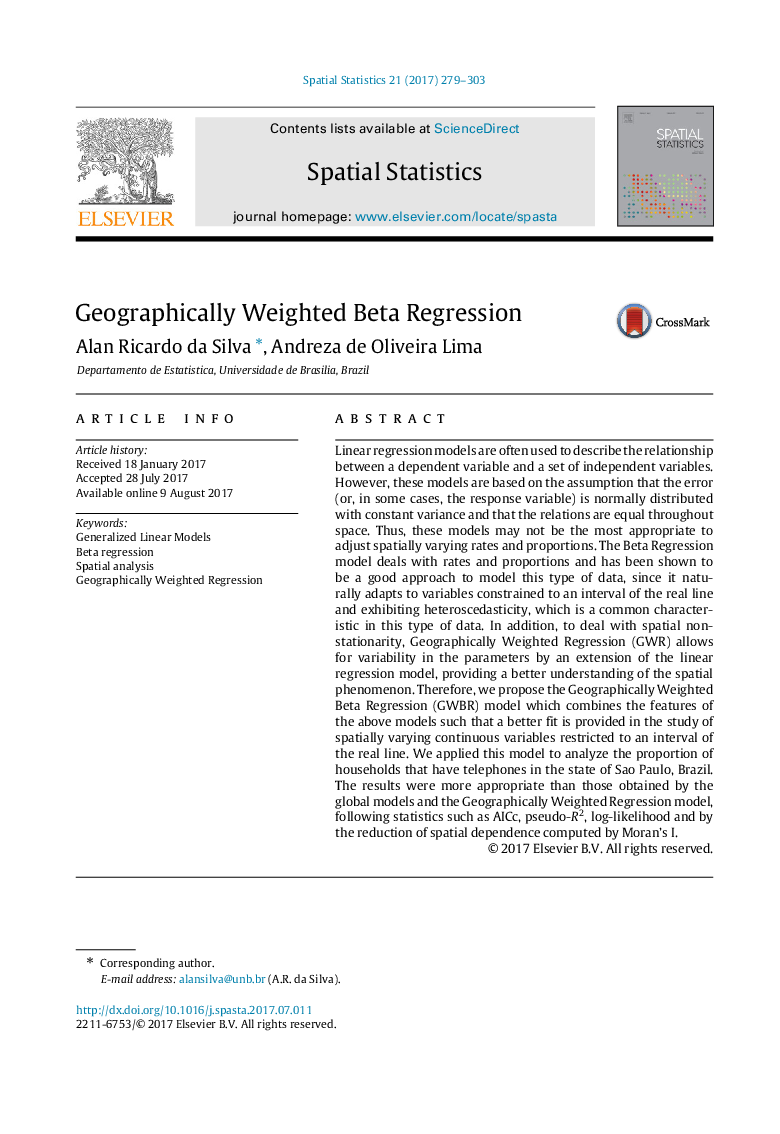| کد مقاله | کد نشریه | سال انتشار | مقاله انگلیسی | نسخه تمام متن |
|---|---|---|---|---|
| 5119003 | 1378193 | 2017 | 25 صفحه PDF | دانلود رایگان |
Linear regression models are often used to describe the relationship between a dependent variable and a set of independent variables. However, these models are based on the assumption that the error (or, in some cases, the response variable) is normally distributed with constant variance and that the relations are equal throughout space. Thus, these models may not be the most appropriate to adjust spatially varying rates and proportions. The Beta Regression model deals with rates and proportions and has been shown to be a good approach to model this type of data, since it naturally adapts to variables constrained to an interval of the real line and exhibiting heteroscedasticity, which is a common characteristic in this type of data. In addition, to deal with spatial non-stationarity, Geographically Weighted Regression (GWR) allows for variability in the parameters by an extension of the linear regression model, providing a better understanding of the spatial phenomenon. Therefore, we propose the Geographically Weighted Beta Regression (GWBR) model which combines the features of the above models such that a better fit is provided in the study of spatially varying continuous variables restricted to an interval of the real line. We applied this model to analyze the proportion of households that have telephones in the state of Sao Paulo, Brazil. The results were more appropriate than those obtained by the global models and the Geographically Weighted Regression model, following statistics such as AICc, pseudo-R2, log-likelihood and by the reduction of spatial dependence computed by Moran's I.
Journal: Spatial Statistics - Volume 21, Part A, August 2017, Pages 279-303
